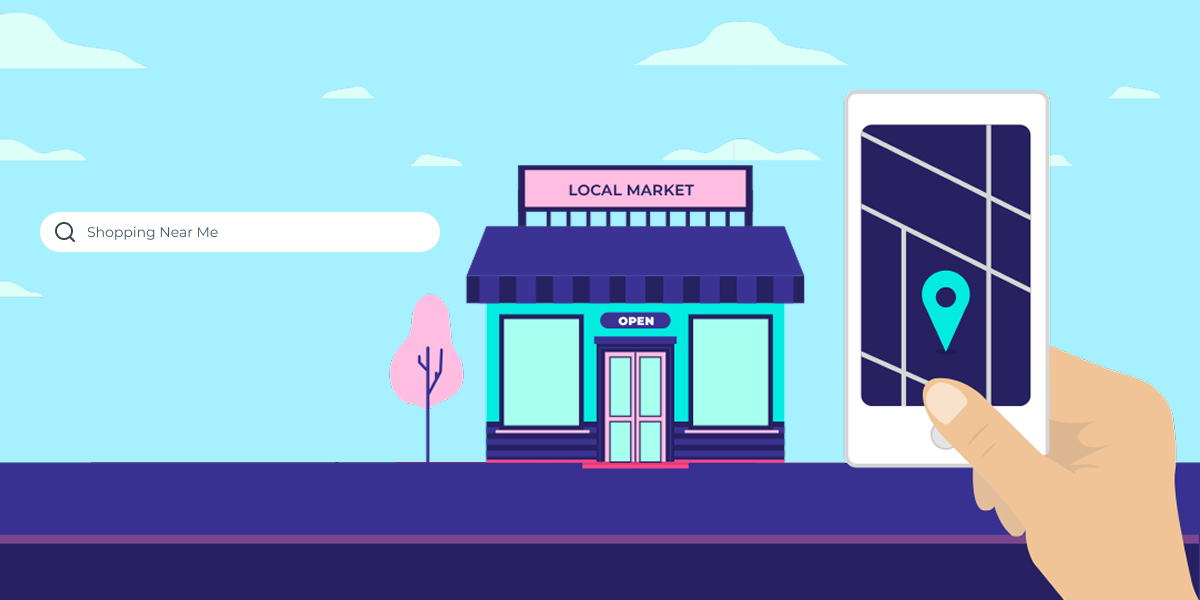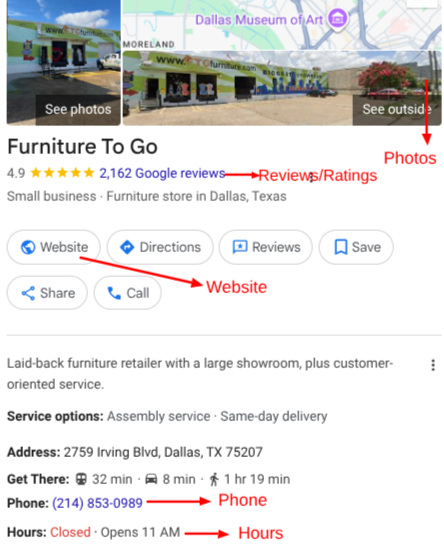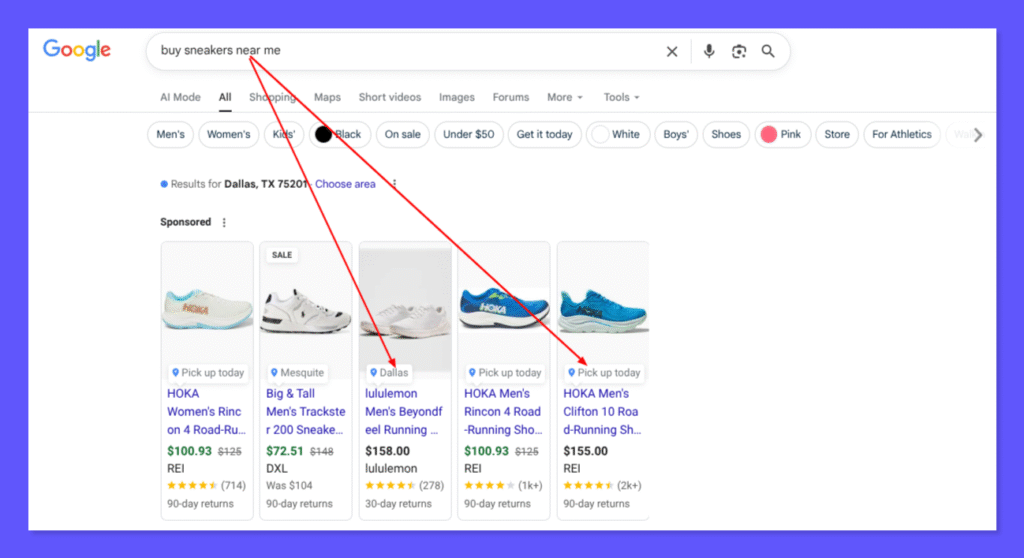Local eCommerce SEO 2.0: The Playbook for Ranking in Maps, Product Surfaces, and ‘Near Me’ Shopping
November 10, 2025,
Post by curvedsphere_new_admin

Online shopping keeps evolving, but one thing hasn’t changed – people still want to buy close to home.
When a customer searches “skincare near me” or “running shoes in my city,” Google now blends eCommerce stores, map listings, and nearby pickup options on the same results page.
Even if you don’t run a storefront, you can appear beside local retailers by aligning your SEO with local intent.
That’s the heart of Local eCommerce SEO 2.0, a strategy that connects your online catalog with your customers’ neighborhoods.
In this article, we’ll explore what Local eCommerce SEO means, why it matters, and actionable steps to help your store rank in Maps, Product results, and “Near Me” searches.
Traditional SEO focused on keywords and backlinks. Local eCommerce SEO 2.0 adds a new layer, it connects your website, Google Business Profile, Merchant Center, and structured data so Google understands both what you sell and where you sell it.
This “2.0” approach combines proximity, product data, and user intent into one strategy. It’s how a Houston-based skincare brand can rank next to brick-and-mortar spas for “buy organic lotion near me.”
Learn more about the foundation of this shift in Moz’s Local Search Ranking Factors.
When people search “near me,” Google interprets it as local intent. The algorithm checks three things, relevance, distance, and prominence, to decide which stores appear in Maps and organic results.
The surprise is that Google doesn’t only list storefronts anymore. If your online store has a verified profile, clear service areas, and delivery or pickup options, you can still appear in those local packs.
U.S. shoppers love convenience but still value local trust. Searches like ‘gift baskets near me’ or ‘pet toys near me’ are growing year over year. Many of those searches end on an eCommerce site that can deliver within the same state or city.
Customers expect local clarity, shipping times, real reviews from nearby buyers, and easy pickup or returns. According to Statista’s online shopping research , most U.S. shoppers value convenience and transparency when buying online.
If your site communicates those details clearly, your click-through rates rise because people trust local information they can relate to.
That’s the power behind “near me” visibility, people don’t just want fast, they want close.

Google’s product surfaces are all the free spaces where your items can appear including Search, the Shopping tab, Maps, Images, and even YouTube.
If you connect your product catalog through Google Merchant Center, you can use a feature called “Surfaces Across Google” to show your products across those platforms without paying for ads.
It’s completely free to set up and helps small eCommerce businesses reach more potential buyers while they’re already searching or browsing on Google.
A Local candle shop uploads its product feed, connects its Google Business Profile, and activates Surfaces Across Google. Now, when someone searches “soy candles near me,” that product can appear:
That’s exposure across three Google surfaces, without paying for ads.

Start by claiming your listing through Google Business Profile.
Choose “Online Retailer” or “Ecommerce Store” as your category, define your delivery or pickup areas, and upload high-quality product images.
Use the Q&A and Posts sections to answer common questions and share promotions that link directly back to your website.
This profile helps Google understand your brand as a real, trusted business rather than just another online store.
Complete listings often appear higher in Map results and get more clicks from local shoppers who are ready to buy.
Pro Tip: Keep your NAP (Name, Address, Phone) information consistent across your website, Merchant Center, and listings, even small mismatches can hurt your local ranking.
Pitch your story to local news outlets, bloggers, and community directories.
A single feature on a respected local site can help your store appear higher in search results than dozens of low-quality directory links.
Look for collaborations with local influencers, sponsor a small event, or list your business on nearby chamber websites, anything that earns genuine mentions from within your community.
Those local signals show Google that you’re a real business serving real customers, not just another online shop.
Mobile and voice go hand in hand when it comes to local shopping. Most “near me” searches now happen on smartphones, often through voice assistants like Google Assistant or Siri.
That means your website needs to load fast, display cleanly on mobile, and answer natural, conversational questions people actually ask.
Use phrases such as “Where can I buy [product] near me?” or “Best [product] store open now.”
These long-tail, voice-style queries help your site match the way real people search instead of how marketers write.
You can check your site’s performance using Google Lighthouse
If your store delivers within certain ZIP codes, create location-specific landing pages like “Shop Gifts in 75001” or “Order Pet Supplies in 90210.”
Include details such as delivery timeframes, cut-off hours, and local pickup options to give search engines and customers a clear signal of where you operate.
You can also use ZIP-level keywords in meta titles, product descriptions, and FAQs, this helps your pages rank for ultra-local queries that competitors often ignore.
It’s a powerful tactic for eCommerce brands that want to dominate regional search results and drive nearby traffic that’s ready to convert.

Local Inventory Ads help bridge organic and paid visibility by showing shoppers that your products are “In stock nearby” or “Pickup today”.
When someone searches “buy sneakers near me” or “laptops available today,” these ads highlight your store’s real-time inventory and pickup options.
They’re ideal for U.S. retailers who want to reach local customers ready to buy now, without running broad national campaigns.
You can set them up through Google Merchant Center by syncing your store’s inventory and delivery details.
Avoid these, and your ranking stability will skyrocket
Q: Can an online-only store show up in Google Maps?
Yes, set your profile as a service-area business and link your product feed. (Google Support)
Q: Do I need a physical address to appear for “near me” results?
No, but you must define clear delivery or pickup zones in your GBP and Merchant Center.
Q: What’s the difference between Local and Traditional SEO?
Traditional SEO drives national reach, Local SEO focuses on proximity, reviews, and Google Maps visibility.
Q: How long until I see results?
Typically 2–3 months once your product feed, GBP, and citations are consistent.